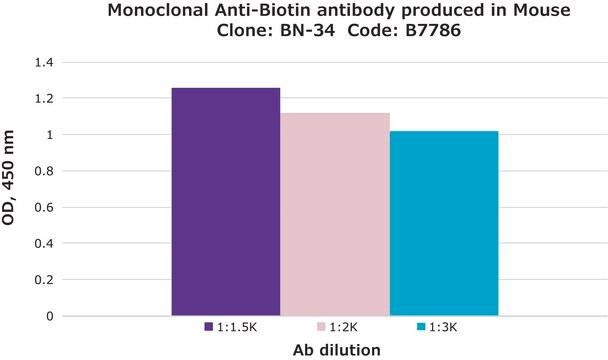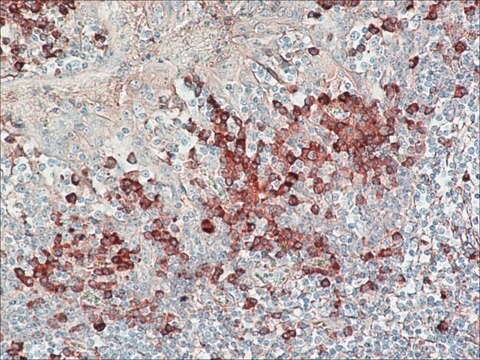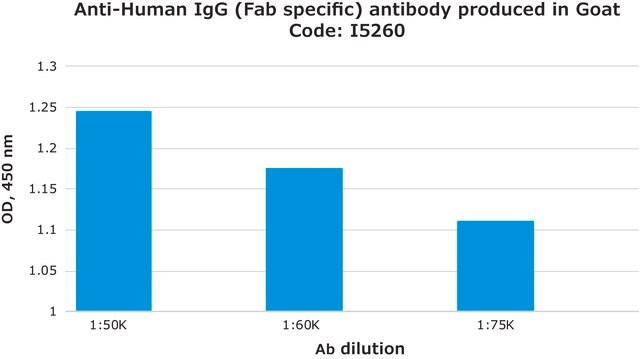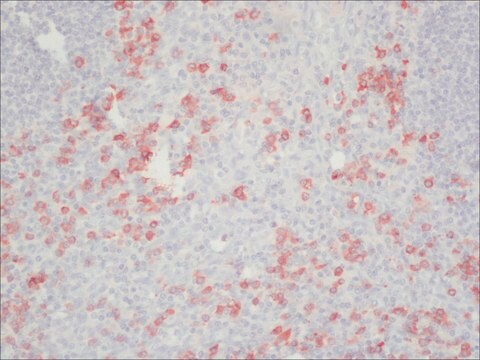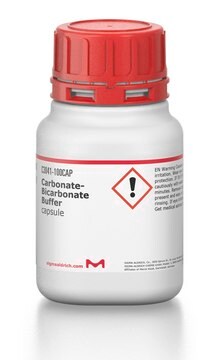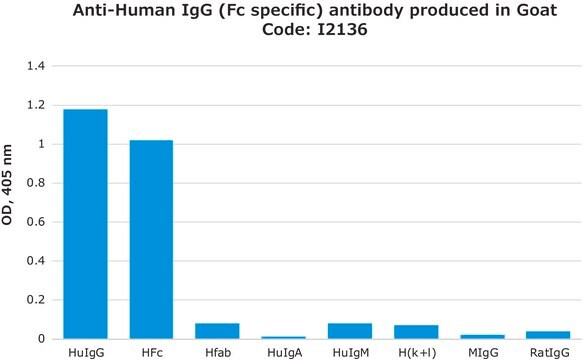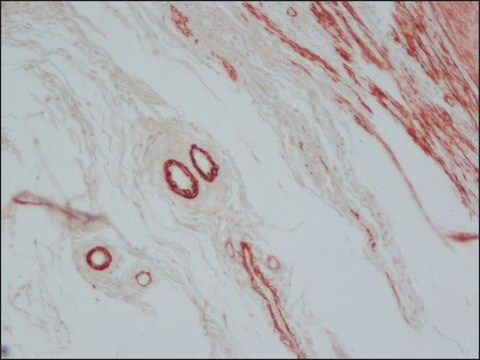B2661
Anti-fd Bacteriophage−Biotin antibody produced in rabbit
~3.5 mg/mL, IgG fraction of antiserum
Synonym(s):
Anti-fd Bacteriophage
Sign Into View Organizational & Contract Pricing
All Photos(1)
About This Item
UNSPSC Code:
12352203
NACRES:
NA.46
Recommended Products
biological source
rabbit
Quality Level
conjugate
biotin conjugate
antibody form
IgG fraction of antiserum
antibody product type
primary antibodies
clone
polyclonal
concentration
~3.5 mg/mL
technique(s)
indirect ELISA: 1:500-1:1,000 using 1010-1011 phage/ml coated wells
shipped in
dry ice
storage temp.
−20°C
target post-translational modification
unmodified
Looking for similar products? Visit Product Comparison Guide
Specificity
The antibody binds specifically to phage coat proteins of fd phage or M13 phage and thus may act as a capture antibody when coated directly on multiwell plates or as a primary detection antibody for specifically captured fd or M13 phage. The antibody may be useful in rapidly sorting large phage display libraries (antibody, peptide, etc.) with the expressed proteins fused to either the gene III or to the gene VIII protein of the filamentous phage. The antibody may be used as a reagent in "phage ELISA" offering sensitive and specific activity for detection of recombinant phages.
Immunogen
fd bacteriophage
Application
Anti-fd Bacteriophage-Biotin antibody produced in rabbit was used to access immunoglobulin content using bead-based immunoassays.
Physical form
Solution supplied in 0.01 M phosphate buffered saline, pH 7.4, containing 15 mM sodium azide
Disclaimer
Unless otherwise stated in our catalog or other company documentation accompanying the product(s), our products are intended for research use only and are not to be used for any other purpose, which includes but is not limited to, unauthorized commercial uses, in vitro diagnostic uses, ex vivo or in vivo therapeutic uses or any type of consumption or application to humans or animals.
Not finding the right product?
Try our Product Selector Tool.
Storage Class Code
10 - Combustible liquids
WGK
nwg
Flash Point(F)
Not applicable
Flash Point(C)
Not applicable
Choose from one of the most recent versions:
Already Own This Product?
Find documentation for the products that you have recently purchased in the Document Library.
Matthew Robert Tomkins et al.
Sensors (Basel, Switzerland), 15(1), 1047-1059 (2015-01-13)
A detection method that combines electric field-assisted virus capture on antibody-decorated surfaces with the "fingerprinting" capabilities of micro-Raman spectroscopy is demonstrated for the case of M13 virus in water. The proof-of-principle surface mapping of model bioparticles (protein coated polystyrene spheres)
Robert Burger et al.
Lab on a chip, 12(7), 1289-1295 (2012-02-16)
We present a novel centrifugal microfluidic platform for the highly efficient manipulation and analysis of particles for applications in bead-based assays. The platform uses an array of geometrical V-cup barriers to trap particles using stopped-flow sedimentation under highly reproducible hydrodynamic
Jussara S Michaloski et al.
Science advances, 2(10), e1600611-e1600611 (2016-11-08)
Receptor tyrosine kinases (RTKs) are key molecules in numerous cellular processes, the inhibitors of which play an important role in the clinic. Among them are the vascular endothelial growth factor (VEGF) family members and their receptors (VEGFR), which are essential
Human myoblasts and muscle-derived SP cells.
Grace K Pavlath et al.
Methods in molecular medicine, 107, 97-110 (2004-10-20)
Einat Panet et al.
Scientific reports, 5, 13230-13230 (2015-08-12)
Cytokinesis is an intensively studied process by which the cell cytoplasm divides to produce two daughter cells. Like any other aspect of cell cycle research, the study of cytokinesis relies heavily on cell synchronization. However, the synchronization of cells during
Our team of scientists has experience in all areas of research including Life Science, Material Science, Chemical Synthesis, Chromatography, Analytical and many others.
Contact Technical Service